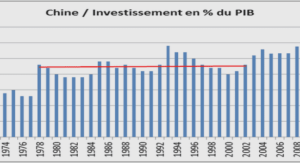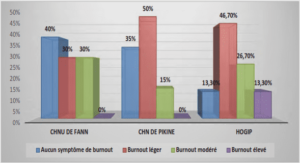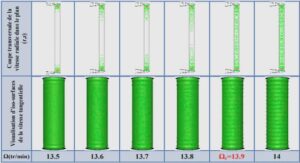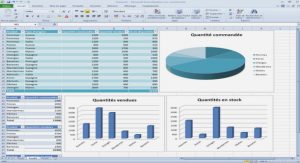Evaluation objective de réseaux d’observation en domaine côtier par la modélisation d’ensemble
Characterization and modelling of the wide swath altimeter errors
In this part, we describe the different sources of errors of the instrument and their technical aspects. This will allow us to specify the error terms added to reference observation y o in the Ensemble Kalman Filter formalism, namely the δyi o vectors, each composed of a nadir sea level error vector δyi n and a cross-track slope error vector δyi s .
Characterization and modelling of the wide swath altimeter errors
Errors of the nadir altimeter
Consistently with previous work cited above, our nadir altimeter is considered to have an instrumental error of 3.9 cm rms, which is larger than the 2 cm rms standard error commonly adopted in the open ocean (Fu, 2003; Le Traon and Ogor., 1998). Larger errors in altimetric data in coastal zones are attributable to several sources. The correction of the wet troposphere effects is perturbed by the presence of the coast (Desportes et al., 2007). Access to altimetric data close to the coast thus requires a special processing called retracking (Anzenhofer et al., 1999), based on different assumptions than in the open ocean, where the focus is instead on basin scales (Le Traon and Ogor, 1998). The model-based correction of tides and high frequency response to meteorological forcing also introduces larger uncertainties as these processes are of much larger amplitude on the continental shelf (Andersen, 1999). The value of 3.9 cm for nadir sea level observation error is considered realistic in our study where tides are not present, as it is very close to values of error budget found for new processed data from current altimeters of the coastal zone in the Northwestern Mediterranean Sea, where tides are of very low amplitude (Bouffard, 2007). It is to be noticed that nadir altimeters are almost insensitive to the platform roll: the radar footprint on the ground would just be translated by a few meters, hardly modifying the distance between the footprint and the satellite, and thus leading to a negligible error in the sea level measurement. The nadir altimeter observation errors are thus uncorrelated, at least through platform roll. The δyi n vector used in the assimilation step is randomly generated using a Gaussian distribution with 0 mean and a 3.9 cm standard deviation. The part of the observation error matrix R dedicated to the nadir sea level measurement is then purely diagonal, with homogeneous variance (3.9 cm)2 .
Errors of the interferometer
Here, in contrast to previous studies, we consider the interferometer-related errors to be composed of two sources of errors: an instrumental error, and an error due to the roll of the satellite: roll i instr i s i δy = δy + δy (8) We chose the instrumental error δyi instr to be 4 cm / 120 km rms in XTS. Enjolras et al. (2006) actually showed that the corresponding error in the XTS calculated from instrumental errors at the middle of the swath reaches 6.3 cm rms. This lower value for the instrumental error in our study attempts to compensate for the lack of density of cross track measurements due to the simplified scheme we chose. Like any working hypothesis, this is questionable, but we feel that the main qualitative results of this paper do not critically depend on the detailed instrumental error budget adopted. The error due to the platform roll δyi roll is an additional XTS error corresponding to a slope error of amplitude 0.2 arcsec. This value is larger than the largest uncertainty on the roll evaluation considered in the study by Enjolras et al. (2006). Indeed in the coastal ocean, the crossover maximum likelihood technique required to reduce the roll angle during the ground post-processing may not be as efficient as in open ocean. An amplitude of 0.2 arcsec Chapitre C : Mer du Nord : Résultats et analyse 47 corresponds to a XTS measurement of 11.6 cm over the 120 km measurement basis, which is much larger than the instrumental error. The errors due to the roll are correlated along the path of the satellite, with a dominant roll frequency close to 0.02 Hz for the Jason-2 platform initially chosen to host the WSOA instrument. This is a low enough frequency to be well modelled by the in-board and ground processing (Enjolras, personal communication). This frequency corresponds to an along-track wavelength of 350 km. An uncertainty has been subsequently added to the central frequency to yield an along-track decreasing correlation: a Gaussian distribution of 0 Hz mean and 0.0025 Hz standard deviation has been used to randomly generate error samples added to the central frequency. A specific case illustrates the role of the uncertainty in frequency by using a 0.005 Hz standard deviation instead of 0.0025. The distributions of frequency in the two cases are shown on Figure C.3. This along-track correlation implies that the non-diagonal elements of the matrix R corresponding to the XTS measurements are now nonzero. Figure C.3: Distribution of the roll error frequency around the mean value of 0.02 Hz for two study cases (104 elements for the test). Together, the XTS errors due to the noise and to the roll make up the δyi s terms used (1) to perturb the observations and (2) to approximate the matrix R off-line as the statistical covariance matrix on a large ensemble (104 members):Figure C.4 shows the full R matrix. The part of the matrix R dedicated to the interferometer error budget is composed of a full matrix block attributable to the roll correlation, plus a C.4. Impact of cross-track measurements 48 homogeneous diagonal block due to the instrumental noise δyi instr. The interferometer and nadir errors are assumed to be uncorrelated. Figure C.4: 3D view of an observational covariance error matrix. The number of observation locations is n=35. Ranks within [1,n] are for nadir sea level, ranks within [n+1,2n] are for XTS measurements. C.4 Impact of cross-track measurements The impact of the wide swath altimeter model in our assimilation system is analyzed through several experiments from spatial, temporal, and space-time statistics. C.4.1 The study configurations Table C.1 describes the experiments carried out in the EnKF framework. Experiment A is nadir only, while Experiment B is nadir+interferometer with no roll of the platform. Together, Experiments A and B show the impact of “idealistic” cross track measurements and the physical aspects linked to this type of observation. Experiments C and D are nadir+interferometer with the platform rolling, but C takes that roll into account in the R matrix while D ignores the corresponding along-track correlation. In both experiments the XTS observation error δyi s used to generate the innovation vector d is defined as in section C.
Case C deals with the correlation of the errors in the data assimilation process where matrix R is modified to this end, as in section C.3.2. Case D assumes that the errors are uncorrelated during the assimilation step, the matrix R being purely diagonal with an amplitude equal to (4+11.6)2 , i.e. the square of the sum of the instrumental error and of the maximum roll-induced error. Experiments E and F are sensitivity tests with respect to Chapitre C : Mer du Nord : Résultats et analyse 49 Experiment C on the amplitude of the uncertainty on the satellite roll frequency (E) and on the interferometer instrumental error (F).
PARTIE 1 : ETUDE DE L’APPORT D’UN ALTIMETRE A FAUCHEE POUR LA CONTRAINTE DE LA PHYSIQUE BAROTROPE EN MER DU NORD EN TENANT COMPTE DES ERREURS DE ROULIS |





